It’s summer … time to hang out in a hammock
The wonderful irony of hammocks is that despite the fact that they provide you with a place to kick back and do nothing more than count the clouds and enjoy the breeze, they are busy boosting color themes, adding atmosphere, providing destinations, and being focal points.
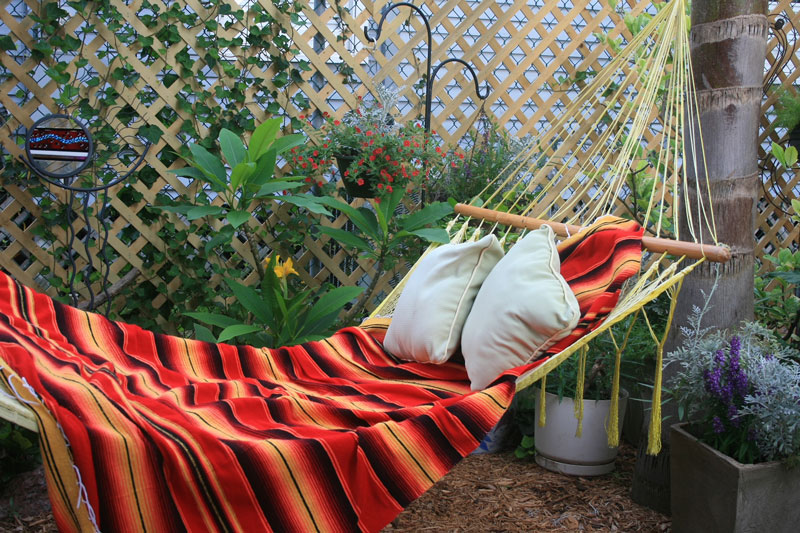
And if their decorative, theme-building talent isn’t reason enough to include a hammock in your landscape, think versatility. With the advent of freestanding frames (trees no longer required), hammocks became popular on balconies and in treeless courtyards. There are quick dry hammocks for poolside, light-weight hammocks with mosquito nets for kids’ backyard camping, and Brazilian-style hammocks with thick cotton fabric and macramé fringe for covered patios and indoor garden rooms. Hammocks made from weather-tough, woven polyester-blend rope are an ideal choice for shady nooks under trees or beside paths.
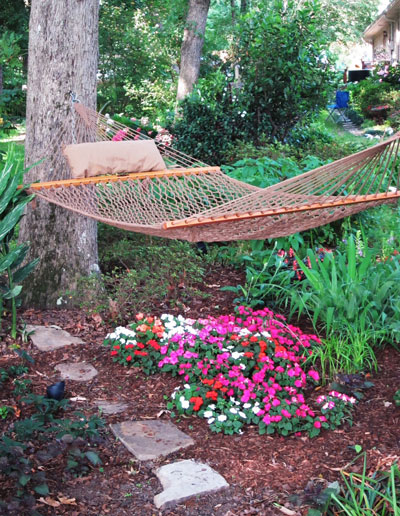
But hammocks haven’t always been so decorative or versatile. Hundreds of years ago the innovative inhabitants of Central and South America wove hammocks from tree bark. These no-frills “suspended beds” helped reduce the number of insect stings and animal bites that resulted from sleeping on the ground.
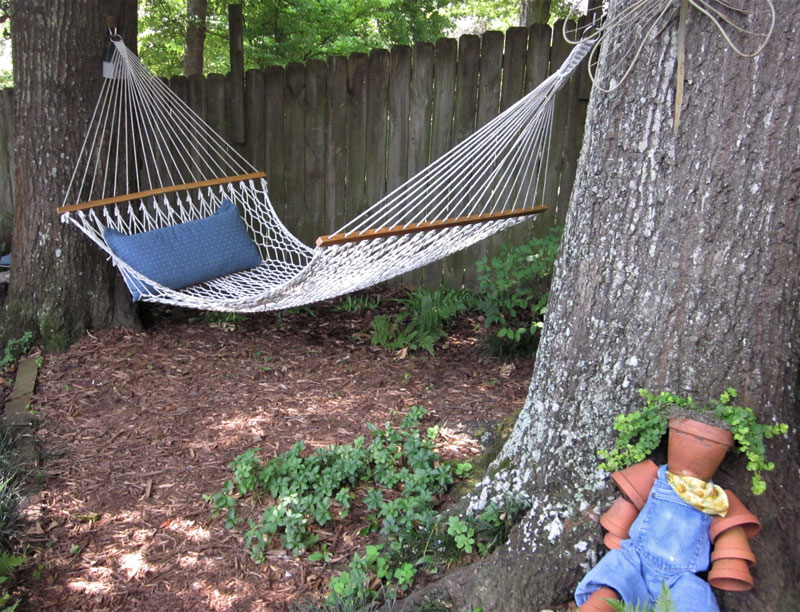
In the late 1400s, Christopher Columbus discovered hammocks in the islands now known as the Bahamas. Among other cargo, he loaded several hammocks and set sail for Spain, thus earning the bragging rights for introducing hammocks to Europe. Later, cotton and canvas fabric brought to the Americas from Spain played a role in the evolution of hammock design.
Eventually, hammocks’ lightweight, space-saving characteristics won over sailors. By the mid-16th century, the Spanish and English navies used hammocks as onboard bunks. By the 19th century, British prisons replaced cots with hammocks to save space and cut costs. Early explorers relied on hammocks; soldiers included them in their packs; and novelists, including Robert Louis Stevenson, Louisa May Alcott and Charles Dickens, mentioned them in their works.
Although hammock’s basic design has remained the same—a length of net, canvas or other sturdy material suspended by ropes or cords at each end—hammock features have modernized with comfort and style in mind.
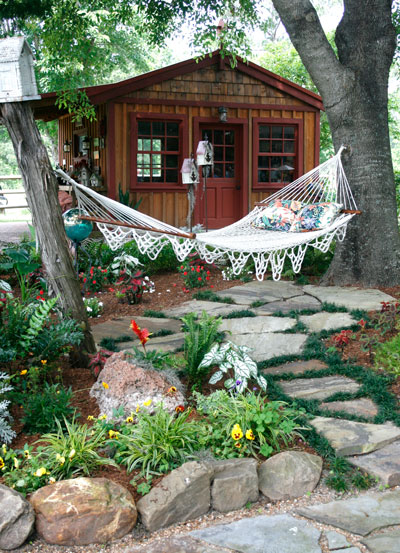
Today’s hammocks include Mayan weave models made from soft cotton string; hand woven rope hammocks (cotton or polyester); quilted hammocks made from soft, padded fabrics; and the showy Brazilian models with sumptuous cloth bodies and decorative fringe. Colors range from the vibrant pink, gold and orange hues of tropical sunsets to the cooling shades of sea green and sky blue.
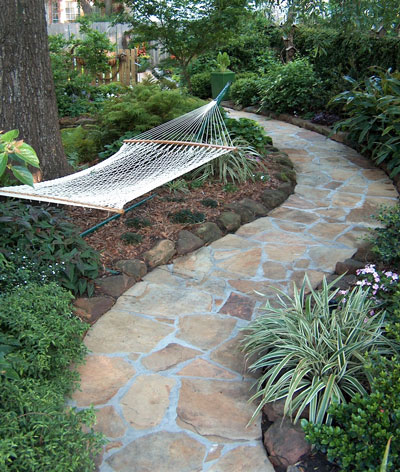
Accessories, too, focus on convenience and comfort. To keep books and snacks handy, attach a hammock caddy to the frame. Need a cool-down? Get a hammock mister or install a canopy or sunshade. Or, when nap time rolls around, lull yourself to sleep by using a rocker kit.
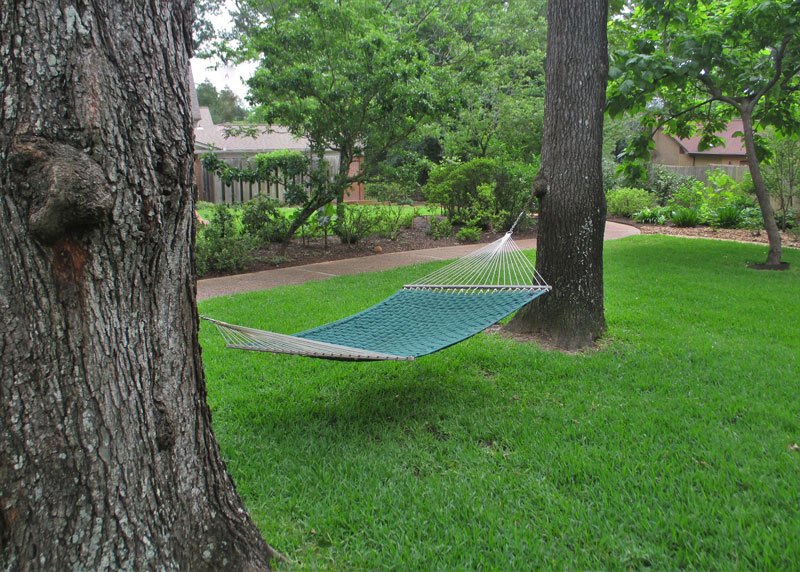
Despite their showy designs, cozy materials, ability to build themes, talent for setting moods, and convenience-building accessories, the best thing about hammocks is that they provide a cloud-counting place to spend more time in the garden.
